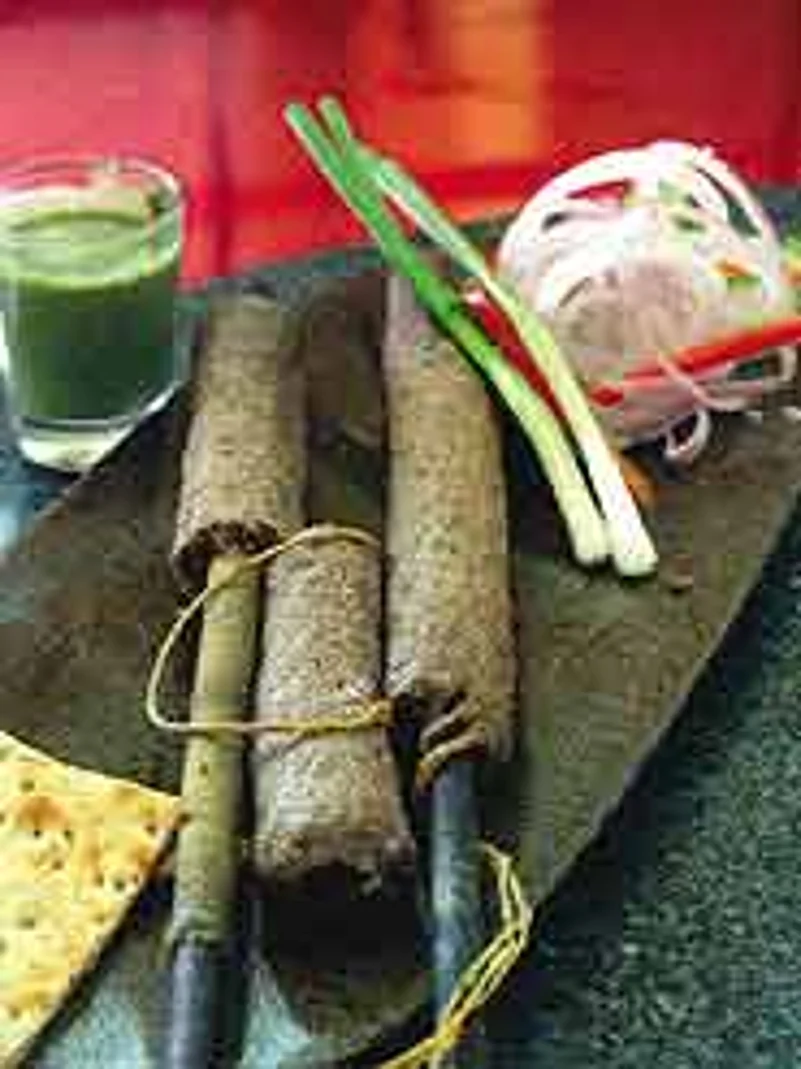
- Rakhi Purnima Dasgupta, food columnist and owner of Kewpie’s (Calcutta’s best known Bengali restaurant), leafs through the Calcutta Cookbook and exclaims; "Look at this—chingrir sambhal. It’s an after-meal chutney made of shrimps. No one makes it any more." Written by her mother, culinary expert Meenaskhi Dasgupta, Rakhi bookmarks endangered recipes as she turns page after page—from chirer murighanto (fishhead cooked with flattened rice) to pumpkin blossoms that were stuffed with poppy seeds and fried in mustard oil. Even chorchori, that common mish-mash of vegetable skins, is risky, says Rakhi. Due to dangerous traces of pesticides on vegetables, this dish is now off the menu at Kewpie’s.
- In Lucknow, the capital of Awadh, as the nawabs have vanished so have their rikabdars who created artisanal foods like the navrang pulaos made by dipping rice grains in pomegranate juice, and dorra kebabs that travelled from here to Hyderabad. At the Radisson MBD Hotel in Noida, chefs at the Made in India restaurant say they’ve revived the dorra kebab from the Salarjang archives in Hyderabad with their ‘memories and prophecies’ menu. Made of finely ground lamb that’s massaged with 32 rare herbs and spices, like Talimkhan for binding and Nakasur for floral bouquet, this kebab is spread on silk dorra that’s smoked with sandalwood, before being laid on smouldering coals. The expertise lies in not allowing the silk to catch fire and letting the meat cook to perfection, so the dorra kebab can be skilfully unravelled with one string-pull. The only offputting fact? This dorra kebab recipe is patented by the Radisson.
- The Hyderabad-based Nawab Mehboob Khan and his wife have dedicated themselves "to preserve and protect Hyderbadi cuisine." Yet, 40 years after undertaking this mission, he bemoans the loss of tutuks—semolina pastries filled with meat—and murg dasht—chicken cooked with almonds and saffron. Bilkees Latif, who’s authored the bestselling Essential Andhra Cookbook, while mentioning the loss of bibi maryam ki roti, highlights some difficulties. After sourcing a traditional Lambada tribal recipe for curry made with blood, it was dropped at final edit, since urban readers would not be able to go out shopping for blood, let alone stomach it.
- In Mumbai, even though that redoubtable big green bean, Bhajirao ghewda, is now in season, it’s not easy to find due to diminishing demand. Maharashtrians top and tail this ghewda, before stuffing it with besan or meat, depending on their Brahminical or non-Brahminical tastes. In Chennai, Bilimbri—a gooseberry variety, used for sour curries along the coast and peninsular India—is also hard to spot. It’s yours to eat only if you have a bilimbri tree in your garden.
- Leave alone knowing our onions, nimboos have become a single yellow-skinned generic, as less of us seek the sourer Baramasi and aromatic Gandharaj varieties. But while we love our mangoes—Hapus, Dussehri, Langda, Benishan—and our rice—Nellore, Surti Kollam and Ambe Mohar, we’re losing out on our connections with the individual character of our chillies. Like the cherry-like Bori mirchi, the slim and aromatic Sankeshwar and rumple-skinned and blistering Byadgi. Maybe next time you’re in a spice market you can ask for your chilli not by its heat factor but by its name.






















